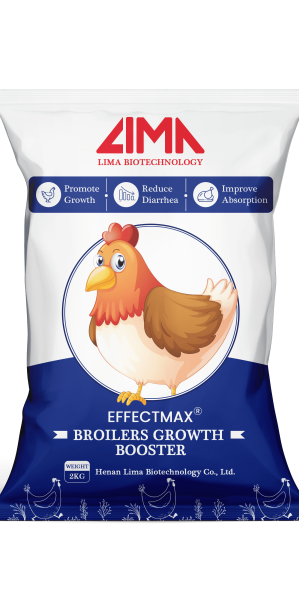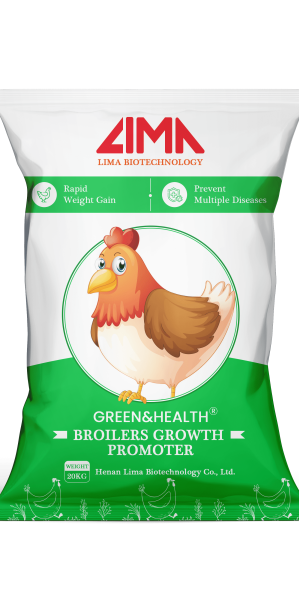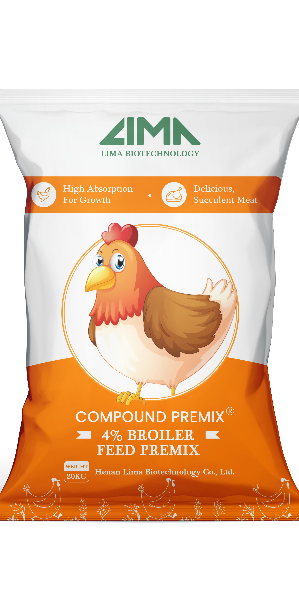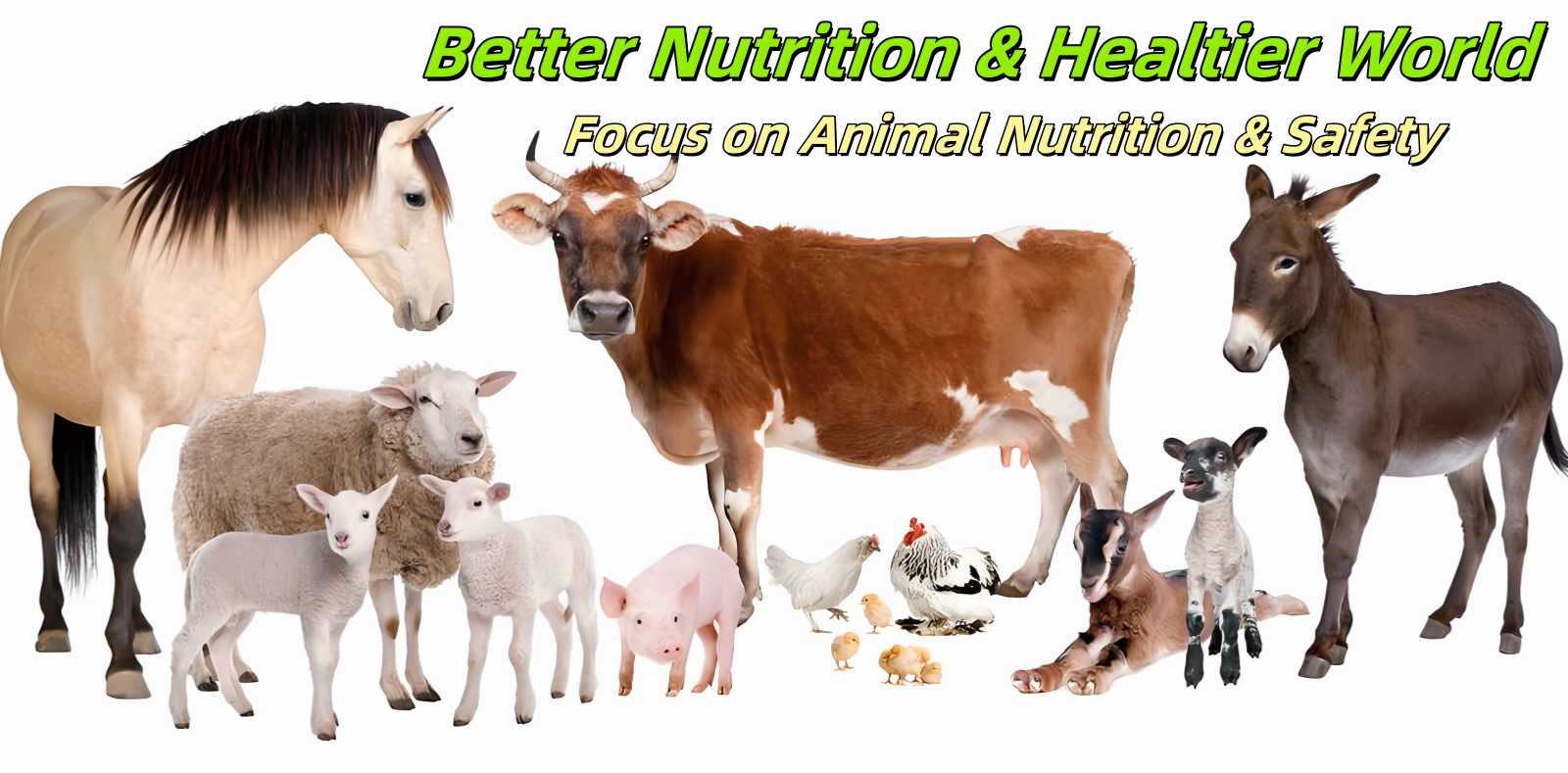For poultry farmers, the growth rate of chickens directly determines the length of the production cycle and the final profit margin, with feed formulation serving as the core variable regulating growth speed. A scientifically designed feed formula enables flocks to gain weight faster and achieve a lower feed-to-meat ratio within the same rearing period, while simultaneously reducing disease risks. Conversely, an unscientific formulation not only slows growth but may also lead to feed wastage and soaring production costs.
Nutritional Cornerstones: Key Ingredients and Functions in Chicken Feed
Any feed formulation that enables rapid chicken growth fundamentally consists of a precisely tailored nutritional combination matching the birds' physiological needs. Chicken growth relies on muscle development, bone formation, and energy metabolism. These three processes correspond to the three core components: protein, minerals, and energy sources. The proportion and source of each component directly impact the formulation's effectiveness.
Protein
Protein serves as the foundation for tissue synthesis in chickens, particularly muscle development. The crude protein content and amino acid composition in feed formulations directly determine growth efficiency. For flocks prioritizing rapid growth (such as white-feathered broilers or commercial laying hens during the finishing phase), crude protein levels in the diet must be adjusted according to growth stages. However, the core principle remains meeting essential amino acid requirements.
- Content Standards: Chick stage (0-3 weeks): 22%-24% crude protein Growth stage (4-6 weeks): 18%-20% Finishing stage (7 weeks+): 16%-18% If protein content falls below these standards, chickens will slow muscle synthesis due to “insufficient raw materials,” leading to growth stagnation.
- Source Selection: Prioritize protein ingredients with “high digestibility + balanced amino acids.” Soybean meal (crude protein 40%-45%) is the most cost-effective base ingredient, accounting for 25%-35% of the formulation. Fish meal (crude protein 60%-65%) supplements essential amino acids like methionine and lysine, and can be added at 3%-5% (excessive amounts may cause fishy meat odor). To control costs, it can be combined with 5%-8% cottonseed meal (pre-detoxified), but avoid amino acid imbalances caused by relying on a single protein source.
- Critical note: If lysine (which chickens cannot synthesize) is deficient in the formula, muscle growth will be inhibited even if total protein meets standards. Therefore, add 0.8%-1.2% lysine hydrochloride to ensure amino acid balance.
Energy Sources
Chickens require energy for daily activities, maintaining body temperature, and nutrient absorption. The proportion and type of energy sources in the feed formulation directly impact “energy utilization efficiency.” Insufficient energy causes chickens to consume protein for energy (known as “protein wastage”), leading to a higher feed-to-meat ratio. Conversely, excess energy is converted into fat deposits, adversely affecting market-ready quality.
- Core Ingredients and Ratios: Corn is the most commonly used energy source, offering high digestibility (approximately 85%) and providing ample carbohydrates. It can constitute 50%-60% of the formulation. Wheat can partially replace corn (20%-30%), but requires the addition of 0.1% xylanase (to break down non-starch polysaccharides in wheat), otherwise digestibility will decrease. To enhance energy density, add 3%-5% vegetable oil (e.g., soybean oil, rapeseed oil) during the finishing phase. Each 1% vegetable oil increases the formula's metabolizable energy by approximately 40 kcal/kg, accelerating weight gain.
- Synergy between Energy and Protein: Formula design must adhere to the “protein-to-energy ratio” principle, requiring 60-70g crude protein per 1000 kcal metabolizable energy. For example, if the formula's metabolizable energy is 3200 kcal/kg, crude protein should be controlled between 19.2%–22.4%. If the ratio is imbalanced (e.g., high protein, low energy), chickens may reduce feed intake due to insufficient energy, thereby affecting protein intake.
Vitamins and Minerals
Although vitamins and minerals constitute a very small proportion of the formulation (typically less than 1%), they play a crucial role in chicken skeletal development, immune function, and enzyme activity. Deficiency in any one of them can lead to stunted growth and even disease.
- Vitamin Requirements: Vitamin D3 should be supplemented at 500-800 IU/kg to promote calcium and phosphorus absorption (deficiency causes rickets, making chickens unable to stand properly); Vitamin E (20-30 mg/kg) protects cell membranes and reduces growth suppression caused by stress. B vitamins (e.g., B2, B12) participate in energy metabolism; deficiency reduces feed intake and causes rough feathers. Avoid single-nutrient supplementation to prevent omissions.
- Mineral Requirements: Calcium and phosphorus are primary bone constituents. Formulations require 1.0%-1.5% calcium and 0.45%-0.6% phosphorus, with a strict calcium-to-phosphorus ratio of 2:1 (imbalance causes calcium absorption disorders and soft leg syndrome in chickens). Sodium (0.15%-0.25%) and chloride (0.1%-0.15%) maintain fluid balance and can be supplemented by adding table salt (0.3%-0.4%); Additionally, zinc (80-100 mg/kg) and manganese (60-80 mg/kg) promote feather development and bone strength, requiring supplementary inclusion of corresponding sulfates in the formulation.
Importances of Chicken Feed Formula
Chicken feed formulation is the key determinant of farming success, with its scientific rigor directly impacting flock growth rates, health levels, and production costs. Oversights in any aspect can significantly diminish formulation effectiveness or even trigger farming risks. For broiler farming, the importance of feed formulation manifests primarily across three core dimensions:
Nutritional balance is the fundamental prerequisite for rapid flock growth
From chick to finishing stage, broilers exhibit phased changes in their requirements for protein, energy, vitamins, and minerals. Formulations must precisely match these needs—insufficient protein hinders muscle synthesis, while energy imbalances lead to feed wastage or fat accumulation. However, relying solely on basic feed ingredients (such as corn and soybean meal) makes it difficult to achieve “nutritional precision utilization.” These ingredients inherently have limitations, particularly regarding anti-nutritional factors (like phytate) and intestinal absorption efficiency. This creates a critical role for feed additives.
Stage-specific adaptation determines a formula's growth-boosting efficiency
Broiler chicks require formulas prioritizing organ development and immune system building during the chick-rearing stage, while the finishing stage demands focus on optimizing feed-to-meat ratios and maximizing weight gain. A one-size-fits-all universal formula wastes growth potential. For instance, excessively high fiber in chick formulas burdens the gut, while insufficient energy density in finishing formulas prolongs market readiness. Formulation stage adaptation requires not only adjusting base ingredient ratios but also targeting stage-specific challenges through additives (e.g., diarrhea in chicks, stress in the finishing phase), ensuring formula effectiveness aligns with real-world farming scenarios.
Cost Control Depends on Resource Utilization Efficiency
Feed costs account for 60%-70% of total broiler farming expenses. A core formulation goal is achieving maximum weight gain at minimum cost. Low digestibility of feed ingredients leads to “high intake, slow growth.” Nutrient losses due to mold contamination or intestinal diseases further escalate costs. Thus, a formulation's value lies not only in nutrient balance but also in preventing nutrient wastage—requiring additives to support mold adsorption, gut protection, and nutrient absorption. This ensures every investment in the formulation translates into tangible returns.
Customized Feed Formulations for Different Chicken Growth Stages
Chickens exhibit vastly different physiological needs at each growth stage: chicks require rapid organ and skeletal development; growing chickens need to prioritize muscle synthesis; and finishing chickens require a balance between weight gain and feed-to-meat ratio.
1. Chick Stage (0-3 weeks): High-Nutrient-Density Formula to Establish Growth Foundations
Chicks possess underdeveloped digestive systems (intestines only one-third the length of adults) with limited digestive capacity, yet exhibit rapid organ and skeletal growth (daily weight gain can reach 50% of initial body weight). Formulas must therefore meet three key requirements: “high protein, easy digestibility, and low fiber.”
- Recommended Formula (based on 100kg): Corn 60kg, Soybean Meal 30kg, Fish Meal 5kg, Vegetable Oil 2kg, Limestone Powder 1.5kg, Dicalcium Phosphate 1kg, Salt 0.3kg, Multivitamin 0.1kg, Trace Mineral Premix 0.1kg.
-Nutritional Specifications: Crude protein 23%, metabolizable energy 3100 kcal/kg, calcium 1.2%, phosphorus 0.55%, lysine 1.2%, methionine 0.5%.
- Key Adjustments: If chicks exhibit diarrhea (potentially due to weak digestive capacity), add 0.2% probiotics (e.g., lactic acid bacteria) to the formula or reduce fish meal proportion to 3% to avoid intestinal burden. Simultaneously, control fiber content below 3% (using bran-free soybean meal and dehulled corn) to prevent intestinal blockage.
2. Growth Phase (4-6 weeks): Balance protein and energy to accelerate muscle synthesis
During this stage, the chickens' digestive systems gradually mature and feed intake increases (average daily intake can reach 80-100g). The core requirement shifts from “organ development” to “muscle growth.” The formulation should appropriately reduce protein levels, increase energy content, and enhance intestinal absorption capacity.
- Recommended formulation (based on 100kg): Corn 65kg, Soybean Meal 22kg, Cottonseed Meal 5kg (detoxified), Vegetable Oil 1.5kg, Limestone Powder 1.2kg, Dicalcium Phosphate 0.8kg, Salt 0.3kg, Multivitamin 0.1kg, Trace Mineral Premix 0.1kg, Phytase 0.02kg (breaks down phytate to release phosphorus).
-Nutritional Specifications: Crude protein 19%, metabolizable energy 3250 kcal/kg, calcium 1.0%, phosphorus 0.5%, lysine 1.0%, methionine 0.45%.
-Key Adjustments: Add 0.5% enzyme preparations (e.g., xylanase, protease) to enhance feed digestibility (especially targeting anti-nutritional factors in cottonseed meal). If feed intake is low, increase vegetable oil content to 2% to “attract consumption through high energy” and ensure daily nutritional intake meets requirements.
3. Finishing Phase (After 7 Weeks): Optimize Feed-to-Meat Ratio Formulation to Achieve Target Final Weight
The finishing phase represents the “golden period” for chicken weight gain (with daily weight gain reaching 50-70g). The core objective is to “maximize weight gain with minimal feed consumption.” Therefore, the formulation must balance “sufficient protein to sustain muscle growth” with “adequate energy to minimize protein wastage,” while controlling fat accumulation.
- Recommended Formula (based on 100kg): Corn 68kg, Soybean Meal 18kg, Bran 3kg (small amount of fiber to promote intestinal motility), Vegetable Oil 2.5kg, Limestone Powder 1.0kg, Dicalcium Phosphate 0.7kg, Salt 0.3kg, Multivitamin 0.1kg, Trace Mineral Premix 0.1kg, Organic Acid (Calcium Formate) 0.3kg (inhibits intestinal pathogens).
- Nutritional Specifications: Crude Protein 17%, Metabolizable Energy 3350 kcal/kg, Calcium 0.9%, Phosphorus 0.45%, Lysine 0.9%, Methionine 0.4%.
- Key Adjustments: To prevent fat accumulation (especially abdominal fat) from excess energy, replace part of the corn (5-8kg) with bran while limiting vegetable oil to no more than 3%. For accelerated weight gain, add 0.1% β-carotene to enhance energy metabolism efficiency. However, discontinue use 10 days prior to slaughter to avoid drug residues.
Select premium raw materials to enhance feed formulation effectiveness
Beware of mold contamination
Energy sources like corn and wheat are prone to mold growth during storage (e.g., aflatoxins, ochratoxins). These toxins impair liver function in chickens, hindering nutrient absorption. Even with adequate protein and energy levels in the formula, chickens may exhibit “high feed intake but slow growth.”
- Selection criteria: During procurement, inspect grain color (no darkening or yellowing) and smell (no musty or sour odors).
- Management Approach: For mildly moldy raw materials (no noticeable odor), add 0.2% mycotoxin adsorbent (e.g., montmorillonite) to the feed formula. Note that adsorbents may slightly bind vitamins, requiring a 10% increase in compound vitamin supplementation. Discard severely moldy materials immediately to avoid minor losses leading to major issues.
Prioritize Easily Digestible Protein
The digestibility of protein sources is more critical than crude protein content—for example, raw soybean meal contains trypsin inhibitors that suppress protein digestion in chickens. Even with 45% crude protein, actual absorption efficiency is only 60%; whereas detoxified soybean meal achieves over 85% digestibility.
- Selection Criteria: Soybean meal should prioritize low-temperature de-solventing products (light yellow color, no burnt odor) to avoid high-temperature destruction of amino acids. Fish meal must be defatted (moisture ≤10%, salt ≤3%) to prevent excessive salt intake causing excessive water consumption and diarrhea in chickens. Cottonseed meal and rapeseed meal must undergo detoxification treatment (e.g., steam detoxification, enzymatic detoxification) to reduce antinutritional factors like gossypol and glucosinolates.
- Testing Methods: Protein raw material digestibility can be assessed via pepsin digestibility tests. Only ingredients with digestibility ≥80% should be included in formulations.
Ensuring Oil Freshness: Preventing Energy Ingredients from Becoming Harmful Substances
Vegetable oils are high-energy ingredients, but once they become rancid, they produce harmful substances like aldehydes and ketones. These not only destroy vitamin E (an antioxidant) in the formulation but also irritate the chicken's digestive tract, leading to reduced feed intake.
- Selection criteria: Prioritize small packaging (10-20L/drum) to avoid prolonged storage after opening.
- Storage requirements: Store oils in a cool, dry place away from direct sunlight. Once added to the formulation, use within 3 days to prevent feed spoilage from oil rancidity.
Common Feed Formulation Pitfalls Leading to Slow Chicken Growth and Solutions
Misconception 1: Excessive Fiber Content Impedes Nutrient Absorption
Some farmers add large amounts of coarse fiber ingredients like bran and rice husks (exceeding 8% of the formula) to reduce costs, overlooking that chickens' digestive systems cannot effectively break down coarse fiber. Excessive fiber occupies gastrointestinal space, reducing protein and energy intake while irritating the intestinal mucosa and decreasing digestive enzyme secretion.
- Solution: Limit crude fiber content to ≤3% for chicks, ≤5% during growth phase, and ≤6% during fattening phase. Replace part of bran/rice husks with digestible fiber sources (e.g., alfalfa meal with ~60% digestibility), and add 0.1% cellulase to enhance fiber digestibility.
Misconception 2: Neglecting Water-Feed Synergy
Nutrients in feed require water for absorption by chickens (e.g., proteins must dissolve before intestinal absorption). Insufficient water intake prevents optimal nutrient utilization, regardless of feed formulation quality. Studies indicate chickens consume 2-3 times more water than feed. If water intake falls below 50%, feed consumption decreases by 30% and growth rate declines by 25%.
- Solution: Provide 1-2 drinkers per 100 chickens, positioned at back height for easy access. Replace water twice daily, maintaining temperatures (≤25°C in summer, ≥15°C in winter). Increase water intake by 10%-20% if formulations include stimulants like salt or organic acids.
Misconception 3: Long-term use of a single feed formula without seasonal adjustments
Seasonal changes affect chicken metabolism and feed intake: During summer heat, chickens reduce feed intake to dissipate heat (15%-20% lower than winter); in winter cold, they increase energy expenditure to maintain body temperature (10%-15% higher than summer). Using the same formula year-round leads to insufficient nutrition in summer and inadequate energy in winter.
- Solution: Adjust the feed formula quarterly based on temperature changes to ensure nutritional supply aligns with the chickens' needs.
Scientific Feed Additive Formulation for Optimized Growth Promotion - Core Advantages of EffectMax® Broiler Growth Promoter
The judicious use of feed additives addresses deficiencies in raw materials (such as anti-nutritional factors and gut microbiota imbalance), further enhancing growth rates and feed utilization.
Scientific Ingredient Combination:
The product combines four core components—bioactive peptides, oligosaccharides, plant polysaccharides, and complex enzymes—each precisely targeting formulation weaknesses.
Bioactive peptides and complex enzymes break down antinutritional factors in raw materials (e.g., phytate, non-starch polysaccharides), enhancing the digestibility and utilization of protein and energy in the formulation, thereby addressing the “absorption difficulty” inherent in basic ingredients.
Oligosaccharides and plant polysaccharides provide a “nutrient source” for beneficial gut bacteria, overcoming the limitation that formulations cannot directly regulate gut microbiota. This approach reduces nutrient loss at its root.
Multi-dimensional Efficacy Coverage:
The product comprehensively addresses the four key farming needs of “immunity, growth, health, and cost,” forming highly effective synergy with feed formulations.
Immune Protection & Disease Prevention: Enhances phagocyte activity to boost broiler immunity, reducing immunity issues caused by nutritional deficiencies in feed formulations. Simultaneously adsorbs mold and eliminates internal toxins, minimizing mold contamination's impact on feed nutrition while alleviating the liver's detoxification burden.
Promotes Absorption & Accelerates Growth: Regulates the intestinal micro-ecological environment, reduces nutritional diarrhea, and ensures optimal absorption of nutrients in the formula. Improves feed absorption rate and reduces feed waste within 3-7 days, with a significant increase in broiler survival rate observed within 14 days.
Stress Reduction & Cost Savings: Alleviates stress responses in broilers during group transfers, temperature fluctuations, and other scenarios, minimizing nutrient depletion caused by stress. During the finishing phase, it improves feed utilization, reduces waste, and lowers medication frequency, indirectly reducing overall farming costs.
Visualization of Phased Efficacy:
Chick Rearing Stage: Enhances the luster of broiler toes and feather color, indicating effective absorption of trace elements in the formulation, laying a healthy foundation for subsequent growth.
Finishing Stage: Not only regulates intestinal health and promotes nutrient absorption, but also prevents diseases and reduces mortality rates. This allows the “energy-protein balance” of the finishing formulation to function optimally, shortening the time to market.
Convenient Use and Stable Storage
Convenient Use: No need to adjust the base ingredient ratios of existing formulations—farmers can implement it directly. Long-term use allows effects to accumulate continuously, further amplifying the formulation's value.
Stable Storage: Simply store in a dry place, avoid exposure to rain, and reseal after opening. The 24-month shelf life meets farmers' long-term usage needs, eliminating the need for frequent repurchasing.
As a manufacturer of broiler growth enhancers, we firmly believe: scientifically formulated chicken feed is the foundation for healthy flock growth, while premium feed additives unlock formula potential and boost farming profitability. Lima EffectMax® Broiler Growth Booster utilizes 100% green, natural plant-based core ingredients, eliminating chemical additives at the source to ensure animal health and safety, helping farmers create greater value.
- About Lima Biotech
- Careers-Lima Biotech
- Code of Conduct-Lima Biotech
- Conditions of Sale-Lima Biotech
- Contact-Lima Biotech
- Cookies Policy-Lima Biotech
- Find Agent-Lima Biotech
- Global Warehouses
- Investor Relations-Lima Biotech
- Legal Information-Lima Biotech
- Privacy Policy-Lima Biotech
- Success-Lima Biotech
- Sustainability-Lima Biotech
- World Class Manufacturing-Lima Biotech




















